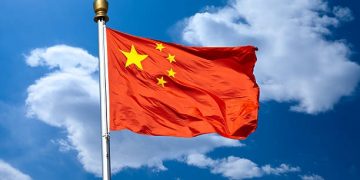The holders of demonetised currency have been given a 50-day window, that is, till December 30, for the exchange/deposit of such notes in banks and post offices. Some part of this currency will be black money and hence may not return to the formal economy.
Some may prefer not to deposit old currency notes in their possession, even if it means a loss to them, to avoid penalty and action from tax authorities.
This has triggered a debate on what will be done to the notes unlikely to return to banks. Will it result in windfall gains for the RBI? If so, should the RBI transfer these gains to the Centre?
Some economists believe demonetisation would bring windfall gains for the RBI as it will reduce the bank’s liabilities to the extent of old notes not returned. This could affect the RBI’s balance sheet and allow it to increase its dividend to the government.
That would provide fiscal relief and enable the government to incur expenditure on infrastructure or social sectors, or to simply transfer cash to people.
The government expects that Rs13 lakh crore will return to the banking system and that about Rs2.5 lakh crore of old notes might stay out. But RBI deputy governor R Gandhi said recently that as on December 10, banks had received Rs12.44 lakh crore in old currency deposits — that is, about 80 per cent of the Rs15.44 lakh crore that were in circulation as 500- and 1,000-rupee notes. Banks have also issued notes for Rs4.61 lakh crore through branches and ATMs.
Analysts estimated that total deposits are likely to reach about Rs13 lakh crore to Rs13.5 lakh crore by end of December. It could be higher as bank officials may have indulged in fraud by issuing new notes in exchange of fake notes.
Hence, only about Rs1.5 lakh crore of old notes might not be deposited in the banking system, which is a small amount for the hardship common people have faced. The Economic Research Department of SBI holds the same view.
The RBI has a balance sheet of assets and liabilities. The asset side of RBI has three main elements: foreign exchange assets, loans to the government, and loans to the banking system. Currency issued is on the liabilities side of the balance sheet of RBI.
A corresponding entry is created on the assets side by investing in, say, treasuries. If the currency in circulation falls, or is disabled in the “black economy”, due to demonetisation, that could result in a decline of liabilities.
But if assets remain the same, the fall in liabilities gives revaluation gains or an increase in net worth for the RBI, giving it a windfall profit. As all profits of the RBI mean income for the government, the latter can spend the increased income without incurring any additional fiscal deficit.
However, some argue that this argument is irrational just as a sudden decline in the value of assets relative to liabilities does not constitute a loss. Economists argue that to adjust its balance sheet, RBI will have to compensate its assets side by transferring the amount by which the liabilities are lowered to reserves. Only when reserves are transferred to RBI’s profit-and-loss account will income of the central bank increase and it can pay a dividend to the government.
Reserves could be transferred to the government even without dividend if the board approves. Pure monetarists may argue it should remain with the RBI for prudence. But the counter view is that these gains are from government actions and not earnings of the RBI.
RBI governor Urjit Patel quashed speculation that the central bank will pay a big dividend to the government. According to him, banned notes not returned “still carry the liability of the RBI as long as only the legal tender characteristic status is withdrawn”. The withdrawal of the status of legal tender characteristics does not extinguish RBI’s balance sheet.
As part of demonetisation, a law would be enacted to make Rs500 and Rs1,000 notes invalid and it can be made effective from March 31. Higher dividend from the RBI owing to devaluation of 500- and 1,000-rupee notes may not be applicable until the RBI law is amended. The government is likely to amend the RBI Act to extinguish the validity of 500- and 1,000-rupee notes printed before November 9 and a reference to this effect would be made in the upcoming budget.
According to Barendra Kumar Bhoi, former principal adviser and head of Monetary Policy Department of RBI, there is no scope to convert these notes into legal tender after deadline. It would not be prudent to treat notes not withdrawn as monetary liability after the deadline, although they bear the RBI governor’s promise.
Assets are typically written off against liability (usually against capital/reserve). There is no uniform practice to extinguish liabilities. The RBI may have to initiate a process, get the board’s approval and then write-off liabilities with equivalent reduction in assets.
However, it will be best if the central bank could keep it as special reserve to meet future liability. The issue should not be whether it is discreet to transfer windfall gains to the government. The rationale of demonetisation is to not generate windfall gains to the RBI and pay it to the government as dividend. This is not consistent with international best practices.
Deriving gains from demonetisation may induce the government to take recourse to such draconian measures periodically in future upsetting economic activities and causing suffering to the common man.
The author is an Orissa-based financial columnist.







































